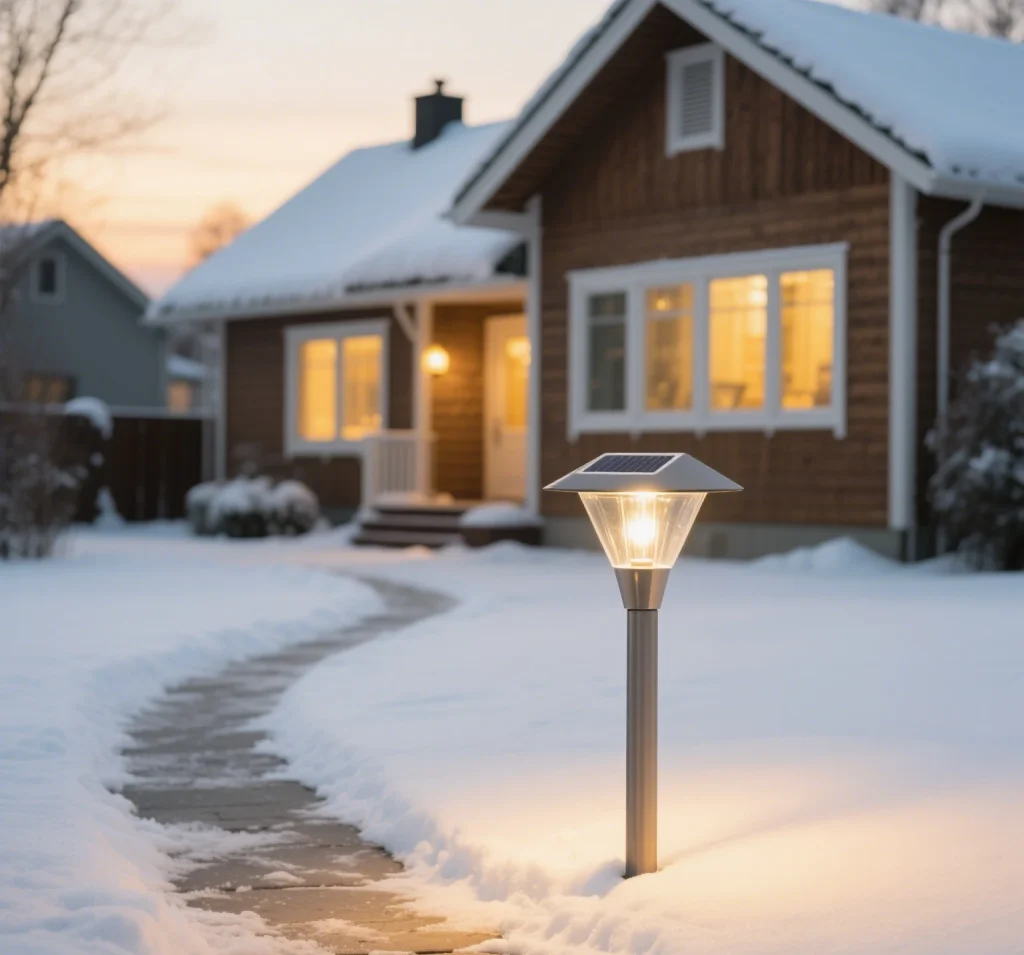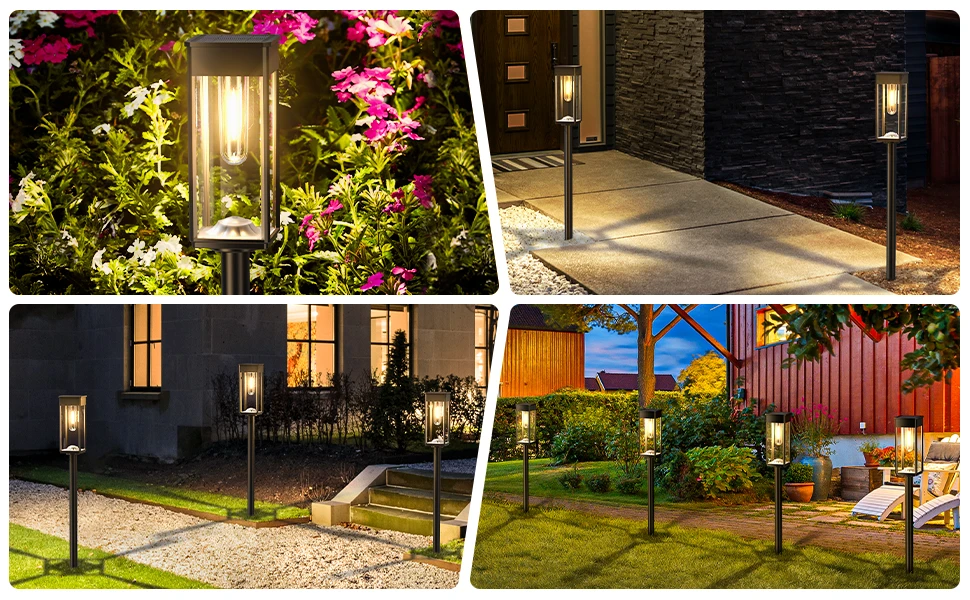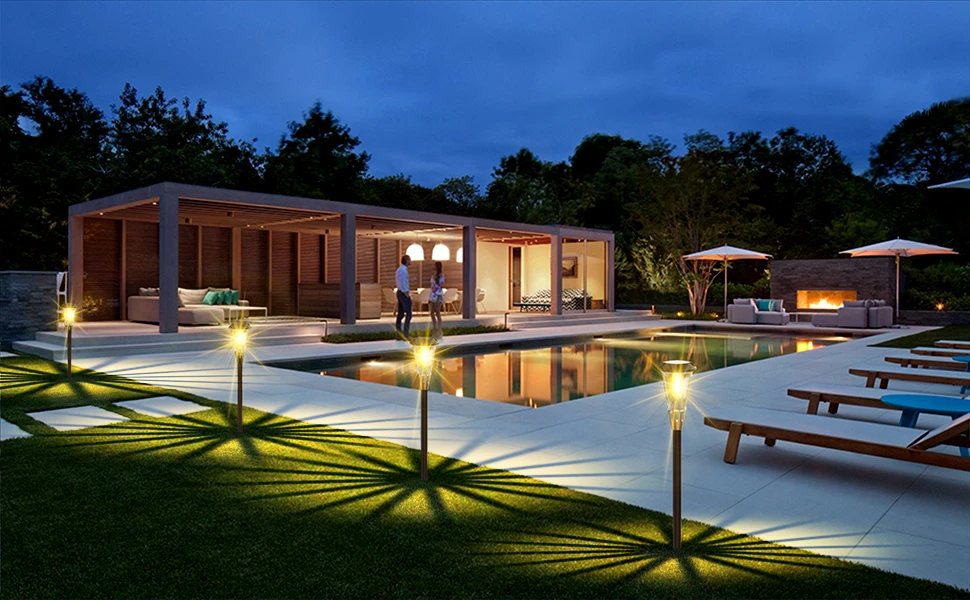As winter blankets landscapes with frost and snow, ensuring your outdoor lighting remains reliable becomes a challenge. Winter-proof solar lights are designed to thrive in cold weather and low sunlight conditions, illuminating your garden, pathways, or fences without faltering. This seasonal guide offers tips for selecting and maintaining solar lights that perform consistently during winter, along with top product recommendations. By focusing on durability, efficiency, and cold-weather performance, you can keep your outdoor spaces safe and inviting all season long.

Why Winter-Proof Solar Lights Matter
Solar lights rely on sunlight to charge, but winter’s short days, cloudy skies, and cold temperatures can hinder performance. Winter-proof solar lights are engineered to overcome these challenges, offering:
- Reliability: Consistent illumination despite limited daylight.
- Durability: Built to withstand freezing temperatures and snow.
- Safety: Lights pathways and entrances to prevent slips in icy conditions.
- Eco-Friendly: Solar power reduces energy costs and environmental impact.
- Aesthetic Appeal: Enhances winter landscapes with warm or bright glows.
Choosing the right solar lights ensures your outdoor areas remain functional and beautiful, even in harsh cold weather.
Key Features to Look for in Winter-Proof Solar Lights
Selecting solar lights for cold weather requires attention to specific features that ensure performance in low sunlight and freezing conditions. Here’s what to prioritize:
Cold-Weather Durability
Look for solar lights with high IP ratings, such as IP65 or IP67, which indicate resistance to water, snow, and dust. Materials like stainless steel, aluminum, or reinforced ABS plastic withstand freezing temperatures without cracking. Check for battery types optimized for cold weather, such as lithium-ion, which perform better than standard batteries in subzero conditions.
Efficient Solar Panels
Winter’s limited sunlight demands efficient solar panels. Monocrystalline panels are ideal, as they capture more sunlight in low-light conditions compared to polycrystalline ones. Look for lights with larger solar panels or amorphous silicon panels, which excel in cloudy weather.
Brightness and Battery Capacity
Brightness, measured in lumens, should range from 10-100 lumens for winter use—lower for ambiance, higher for safety. A high-capacity battery (e.g., 2000mAh or more) ensures longer illumination during short winter days. Adjustable brightness settings can help conserve energy.
Design for Winter Aesthetics
Choose designs that complement winter landscapes, such as warm-toned lights for a cozy glow or sleek, modern fixtures for a crisp look. Copper or stainless steel finishes add elegance while resisting corrosion in snowy conditions.
Top Picks for Winter-Proof Solar Lights
Below are four top-rated solar lights designed for cold weather, evaluated for durability, brightness, and winter performance.
1. FrostGuard Solar Path Light
- Brightness: 50 lumens
- Durability: IP67, stainless steel
- Battery: 2200mAh lithium-ion
- Pros: High brightness, cold-resistant battery, sleek design
- Cons: Higher price point
The FrostGuard Solar Path Light delivers 50 lumens, perfect for illuminating garden paths in winter. Its IP67 rating ensures protection against snow and ice, while the stainless steel body resists corrosion. The 2200mAh lithium-ion battery holds charge well, even in low sunlight.
2. SnowShield Solar Stake Light
- Brightness: 30 lumens
- Durability: IP65, reinforced ABS plastic
- Battery: 1800mAh lithium-ion
- Pros: Affordable, durable, adjustable brightness
- Cons: Less bright than premium models
The SnowShield Solar Stake Light offers 30 lumens and an IP65-rated ABS plastic body, ideal for snowy conditions. Its monocrystalline panel maximizes charge in cloudy weather, and the adjustable brightness conserves battery life during long winter nights.
3. ArcticGlow Solar Lantern
- Brightness: 20 lumens
- Durability: IP65, copper finish
- Battery: 1500mAh lithium-ion
- Pros: Warm glow, stylish copper design, easy to hang
- Cons: Lower brightness for ambiance only
The ArcticGlow Solar Lantern provides a cozy 20-lumen glow, enhancing winter aesthetics with its copper finish. Its IP65 rating and lithium-ion battery ensure reliability in cold weather, making it perfect for fence posts or garden accents.
4. Bitpott Solar Post Cap Light PC-T-001
- Brightness: 80 lumens
- Durability: IP65, ABS plastic with copper tone
- Battery: 2000mAh lithium-ion
- Pros: High brightness, versatile post compatibility, cold-weather resilience
- Cons: Plastic may feel less premium

The Bitpott PC-T-001, with a copper-toned finish, delivers 80 lumens for bright illumination. Its IP65 rating and 2000mAh battery ensure performance in cold weather, fitting posts from 3×3 to 6×6 inches for versatile use on fences or decks.
Comparison Table
| Product | Brightness | Durability | Battery | Design | Price | Rating |
|---|---|---|---|---|---|---|
| FrostGuard Path Light | 50 lumens | IP67, stainless steel | 2200mAh lithium-ion | Sleek, modern | $$$$ | 4.8/5 |
| SnowShield Stake Light | 30 lumens | IP65, ABS plastic | 1800mAh lithium-ion | Simple, functional | $$ | 4.6/5 |
| ArcticGlow Lantern | 20 lumens | IP65, copper | 1500mAh lithium-ion | Vintage, cozy | $$$ | 4.5/5 |
| Bitpott PC-T-001 | 80 lumens | IP65, ABS plastic | 2000mAh lithium-ion | Copper-toned, modern | $$$ | 4.7/5 |
Tips for Choosing Winter-Proof Solar Lights
To select the best solar lights for cold weather, consider these tips:
- Check Temperature Ratings: Ensure lights are rated for temperatures as low as -20°C (-4°F) to handle extreme cold.
- Prioritize Battery Life: Choose models with batteries that retain charge in low temperatures, like lithium-ion.
- Assess Sunlight Exposure: Place lights in areas with maximum winter sunlight, avoiding shaded spots.
- Match Aesthetics: Select finishes (e.g., copper, stainless steel) that enhance your winter landscape.
Installation Tips for Cold Weather
Proper installation maximizes the performance of winter-proof solar lights:
- Optimize Sunlight: Position lights where they receive 4-6 hours of winter sunlight, avoiding shadows from trees or structures.
- Secure Mounting: Use sturdy stakes or brackets to prevent dislodging in snow or wind.
- Clear Snow: Ensure solar panels are free of snow accumulation for optimal charging.
- Test Performance: Charge lights for a full day before winter use to confirm brightness and battery life.
Maintenance Tips for Winter
Maintaining solar lights in cold weather ensures consistent performance:
- Clean Panels Regularly: Remove snow, ice, or debris from solar panels weekly to maintain charging efficiency.
- Check Batteries: Inspect and replace batteries if lights dim, as cold weather can reduce battery life.
- Protect from Ice: Use waterproof covers or sealants on non-IP-rated components to prevent ice damage.
- Store if Necessary: In extreme conditions, consider storing lights indoors during heavy snowstorms to extend lifespan.
Enhancing Your Winter Landscape
Winter-proof solar lights do more than provide light—they enhance your outdoor space:
- Safety First: Illuminate pathways and steps to prevent accidents in icy conditions.
- Winter Ambiance: Warm-toned lights, like the ArcticGlow, create a cozy glow against snowy backdrops.
- Highlight Features: Use lights to accentuate evergreens, winter blooms, or garden structures.
- Eco-Conscious Choice: Solar lights reduce energy use, aligning with sustainable winter landscaping.
Conclusion: Brighten Your Winter with Solar Lights
Winter-proof solar lights are essential for keeping your outdoor spaces safe, functional, and beautiful during cold weather. Models like the Bitpott PC-T-001 and FrostGuard Path Light offer bright, durable solutions for low sunlight conditions, while the ArcticGlow adds cozy charm. By choosing lights with cold-resistant batteries, efficient panels, and weatherproof designs, you can ensure reliable performance all winter. Follow our installation and maintenance tips to keep your solar lights shining, transforming your garden or pathways into a winter wonderland of light and warmth.


Leave a Reply